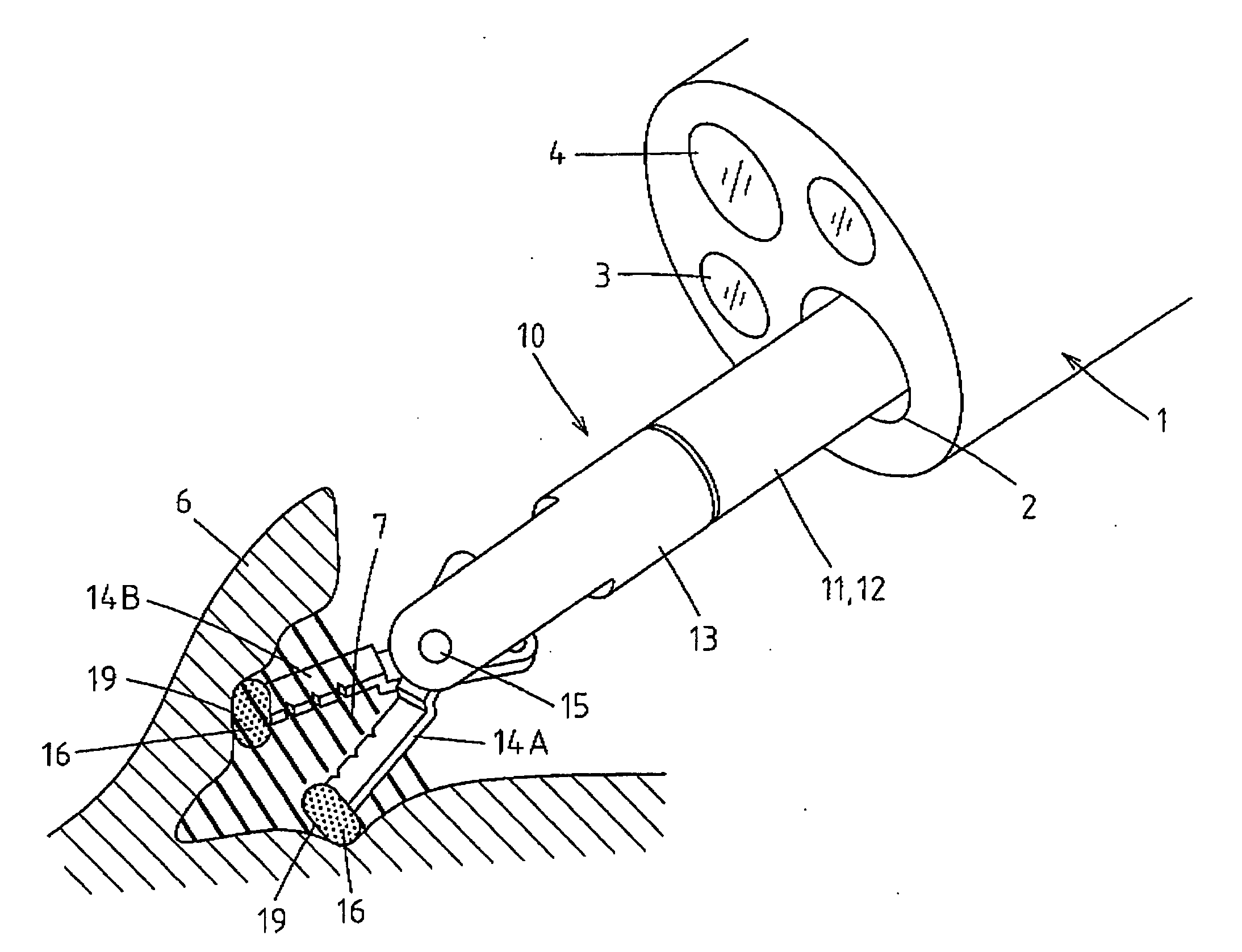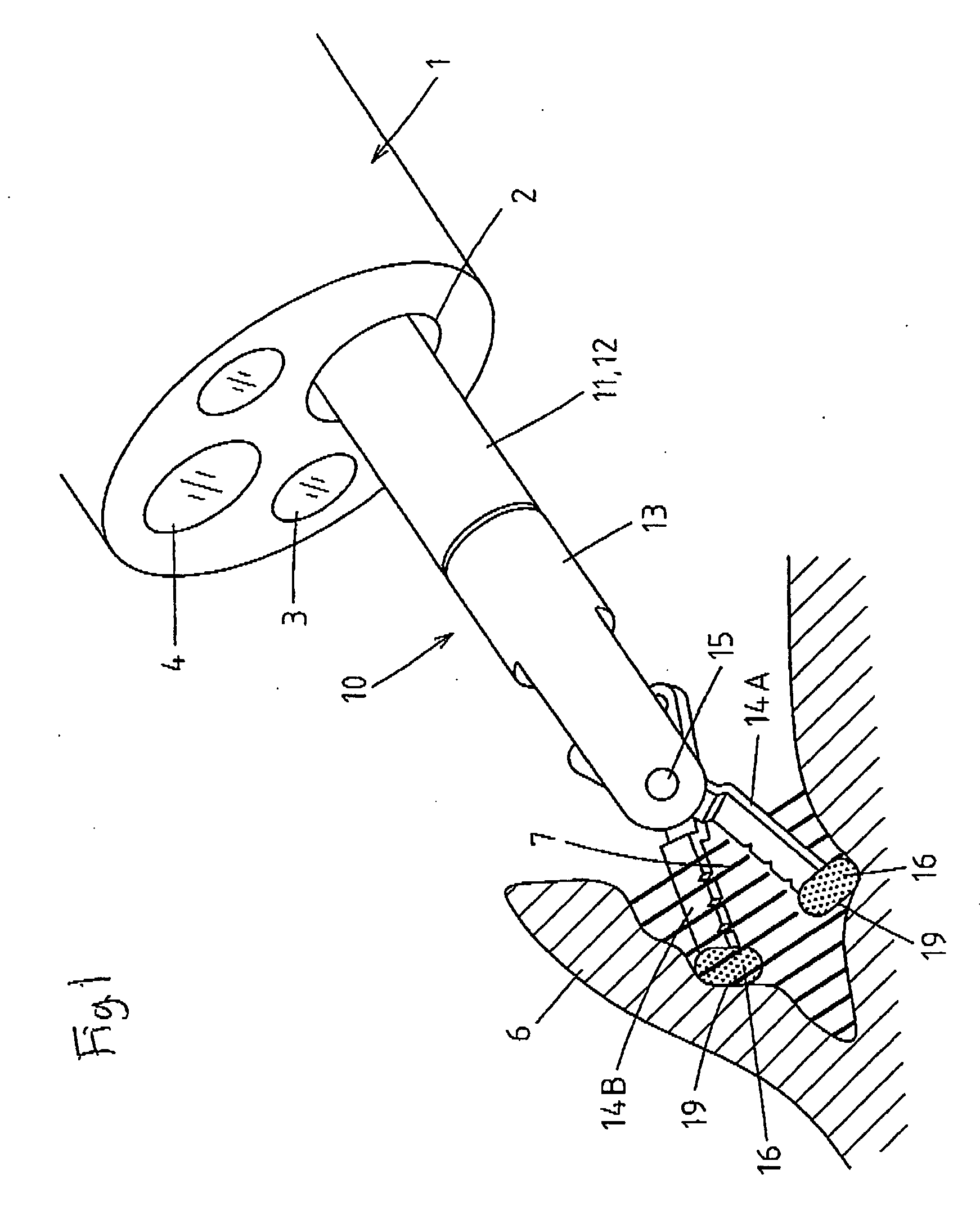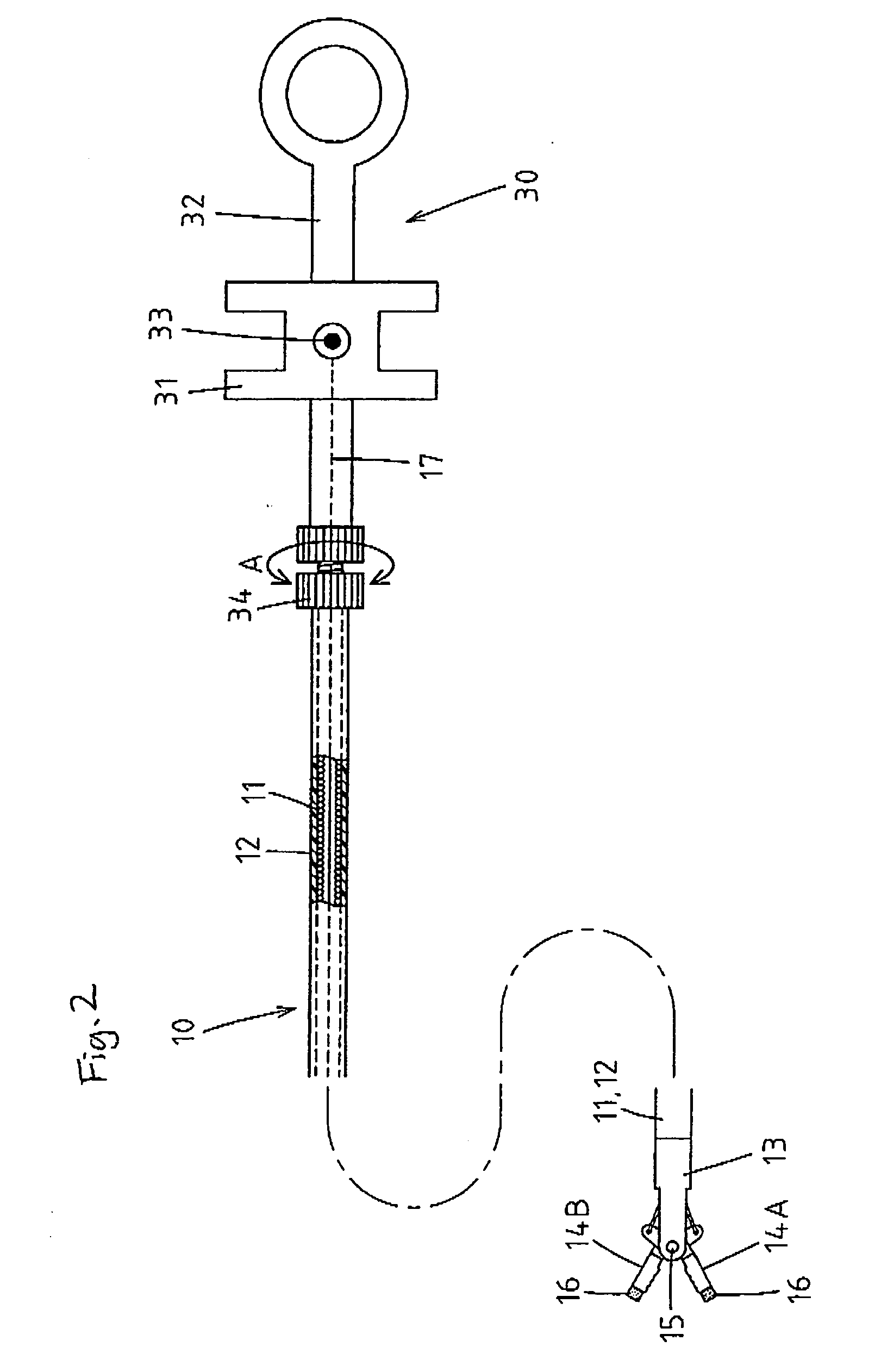High frequency incision tool for endoscope
a high-frequency incision and endoscope technology, applied in the field of high-frequency incision tools for endoscopes, can solve the problems of compromising patient safety, affecting patient safety and affecting the safety of patients
- Summary
- Abstract
- Description
- Claims
- Application Information
AI Technical Summary
Benefits of technology
Problems solved by technology
Method used
Image
Examples
first embodiment
[0072] Embodiments of the invention will be specifically described hereinafter with reference to the drawings. FIG. 1 shows a state that a high-frequency incision tool 10 of the invention is inserted through a treatment tool guide lumen 2 of an endoscope 1 and a front end portion of the high-frequency incision tool 10 protrudes from the treatment tool guide lumen 2 into a body cavity of a patient. This process is illuminated by illumination light radiated from an illumination window 3 of the endoscope 1 and endoscopically observed through an observation window 4.
[0073] The portion of the high-frequency incision tool 10 that is inserted through and extracted from the treatment tool guide lumen 2 is constructed in such a manner that a flexible sheath 11 is coated with a casing tube 12 formed of a flexible, electrically insulating tube, through which an operation wire formed of a conductive stainless steel wire or the like is inserted. A front support member 13 is fixedly connected to...
second and third embodiment
[0081]FIGS. 6 and 7 show the front end portion of the high-frequency incision tool 10 according to second and third embodiments of the invention. Each of the electrode blades 14A and 14B deviates sideways from the extension of the center axis line of the front end portion of the front support member 13 and each of the tip portions of the electrode blades 14A and 14B bends sideways (inward) to form an L-shape. Thus configured electrode blades 14A and 14B are easier to manufacture.
[0082] In the second embodiment shown in FIG. 6, the insulating coating 16 encloses the portion of each of the electrode blades 14A and 14B that is distal from the bent position. In the third embodiment shown in FIG. 7, the insulating coating 16 encloses not only the portion of each of the electrode blades 14A and 14B that is distal from the bent position but also the portion backward therefrom. As shown in the figures, the insulating coating 16 only needs to enclose the tip portion of each of the electrode...
fourth embodiment
[0083]FIG. 8 shows that the front end portion of the high-frequency incision tool 10 according to a fourth embodiment of the invention protrudes from the treatment tool guide lumen 2 of the endoscope 1 to perform high-frequency incision (or coagulation). The pair of the electrode blades 14A and 14B in this embodiment is formed such that a half side of a cup of known bawl-shaped metal biopsy forceps is cut and the half-cut bawls face to each other, as shown in FIG. 9, the side view, and FIG. 10, the cross-sectional view taken along the line A-A shown in FIG. 9.
[0084] In this configuration again, at the tip of each of the electrode blades 14A and 14B is formed a curved planar portion 19 that has a larger projected area, when viewed from the front, than the cross-sectional area of each of the electrode blades 14A and 14B at a portion close to its front end. This allows the electrode blades to be protruded into the body cavity without damaging the mucous membrane 6 and mechanically pus...
PUM
 Login to View More
Login to View More Abstract
Description
Claims
Application Information
 Login to View More
Login to View More - R&D
- Intellectual Property
- Life Sciences
- Materials
- Tech Scout
- Unparalleled Data Quality
- Higher Quality Content
- 60% Fewer Hallucinations
Browse by: Latest US Patents, China's latest patents, Technical Efficacy Thesaurus, Application Domain, Technology Topic, Popular Technical Reports.
© 2025 PatSnap. All rights reserved.Legal|Privacy policy|Modern Slavery Act Transparency Statement|Sitemap|About US| Contact US: help@patsnap.com



